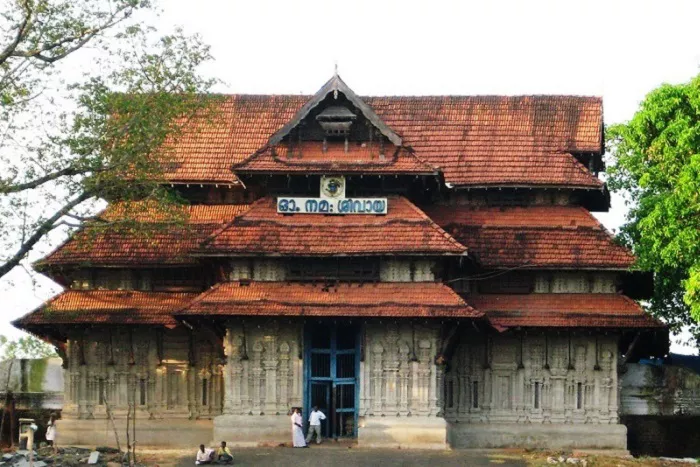The iconic banyan tree known as “Arayaal Muthassi” (the Banyan Grandmother), located at the Sreemoolasthanam in the historic Vadakkumnathan Temple, has been granted a new lease on life after unexpectedly sprouting fresh buds, halting its scheduled cremation.
Standing for nearly a century, the tree has silently witnessed generations of rituals, including the famed Thrissur Pooram. However, over the past three years, it suffered severe damage due to termite infestation, fungal growth, and natural decay. With dried branches posing a safety hazard in the densely visited temple grounds, authorities had decided to ritually remove and cremate the sacred tree. A funeral pyre had been prepared, and a new sapling was ready for planting in its place.
The narrative took an unexpected turn when, amid intense summer heat, fresh shoots began to emerge from various parts of the tree—a development perceived by many as a sign of divine intervention.
In response, scientists from the Kerala Forest Research Institute (KFRI) were brought in to assess the resurgence. Following their evaluation, a structured rejuvenation plan was launched to restore the tree’s vitality. The third phase of this treatment commenced on World Environment Day as part of the Cochin Devaswom Board’s ecological initiative, “Deankanam Charuharitham.”
Tree Surgery and Restoration Efforts
The rejuvenation process involves systematic tree surgery. Experts first conduct detailed inspections to identify fungal infections and pest infestations, particularly those that thrive during the monsoon. Damaged and decaying parts are pruned, and root systems are stimulated using special treatments.
For nourishment, the tree is treated with Panchagavyam, a traditional organic blend made from cow urine, dung, milk, curd, and ghee. Additionally, Nalpamara—a group of four medicinal tree species—has been planted around the banyan to create a medicinal grove. These supporting trees are expected to grow together, offering structural reinforcement and promoting a healthy micro-ecosystem around the banyan.
“We removed the dead branches and strengthened the roots to bring the banyan back to life,” said Dr. Kannan C.S. Warrier, Director of the Kerala Forest Research Institute.
Highlighting the challenges posed by environmental fluctuations, Dr. P. Sujanapal, Head of the Silviculture Division at KFRI, added, “Trees cannot withstand sudden climate changes. That’s why treatment is initiated now.”
The revival of Arayaal Muthassi has turned into a powerful symbol of resilience and ecological reverence, resonating deeply with both the temple community and environmental advocates.


